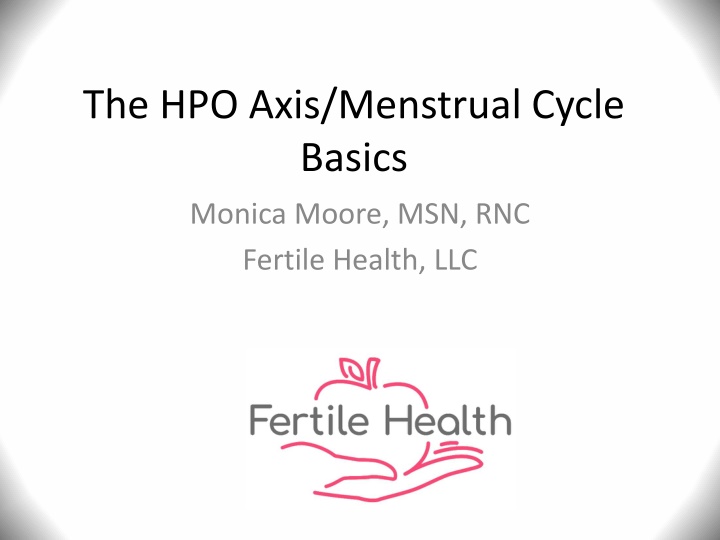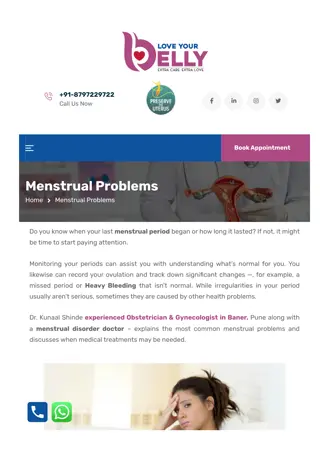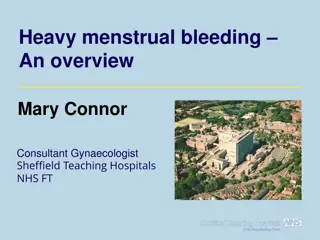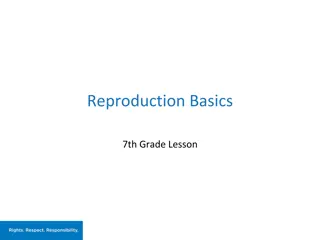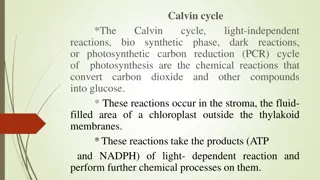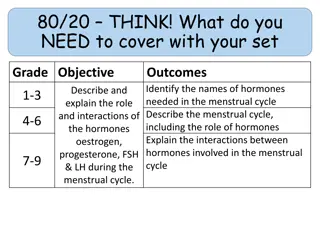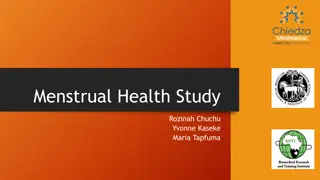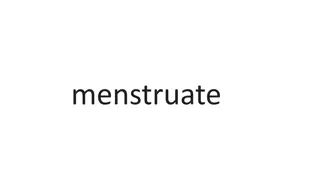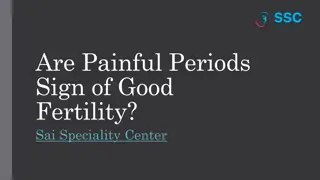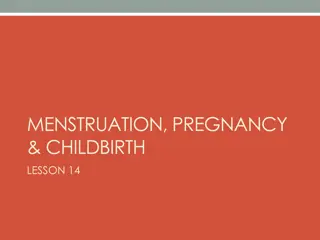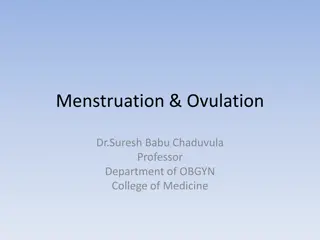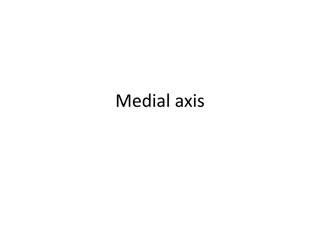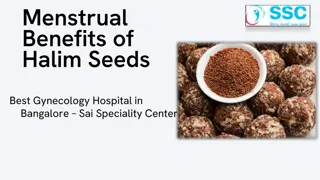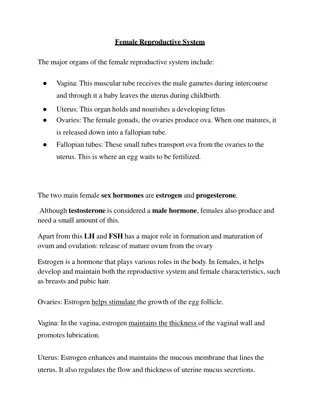The HPO Axis/Menstrual Cycle
This detailed guide covers the normal hypothalamic-pituitary-ovarian axis, major hormones involved, menstrual cycle phases, and female fertility principles. Explore the structures, interactions, and functions, illustrated with informative images.
Uploaded on Feb 28, 2025 | 2 Views
Download Presentation

Please find below an Image/Link to download the presentation.
The content on the website is provided AS IS for your information and personal use only. It may not be sold, licensed, or shared on other websites without obtaining consent from the author.If you encounter any issues during the download, it is possible that the publisher has removed the file from their server.
You are allowed to download the files provided on this website for personal or commercial use, subject to the condition that they are used lawfully. All files are the property of their respective owners.
The content on the website is provided AS IS for your information and personal use only. It may not be sold, licensed, or shared on other websites without obtaining consent from the author.
E N D
Presentation Transcript
The HPO Axis/Menstrual Cycle Basics Monica Moore, MSN, RNC Fertile Health, LLC
Objectives Part 1: The normal hypothalamic-pituitary- ovarian axis (HPO Axis) Distinguish the structures of the HPOA and describe how they interact as a feedback cycle Discuss the major hormones involved in the HPOA
Objectives Part 2: The Menstrual Cycle Identify the major hormones of the menstrual cycle and describe their major functions Explore the different phases of the menstrual cycle-ovarian and uterine
Objectives Part 3: Female Fertility Identify the basic principles of female fertility as they relate to the HPOA and menstrual cycle
Hypothalamic-Pituitary-Ovarian Axis Coordinated by system of feedback loops Dependent upon the interaction of the hypothalamus, pituitary gland, and ovaries
HPO Basics: The Hypothalamus Drives the cycle Secretes Gonadotropin Releasing Hormone (GnRH) in a pulsatile manner every 60-120 minutes Altering the amplitude or frequency of the pulses can trigger negative or positive feedback Also secretes TRH, CRH and other hormones (influences thyroid and adrenal function) and metabolic homeostasis.
HPO Basics: The Anterior Pituitary Hypothalamus acts on anterior pituitary gland to secrete gonadotropins: follicle stimulating hormone (FSH) and luteinizing hormone (LH) And TSH and PRL
HPOA Basics The anterior pituitary acts on the ovary to secrete estradiol and progesterone
FSH Stimulates the follicles to grow Induces LH receptors on follicles Increases estrogen and inhibin secretion
LH Aids in follicular growth(Increases androgens) Causes ovulation to occur Sustained E2 levels-change to positive feedback Causes the Corpus Luteum to secrete progesterone Activates and matures eggs that are frozen in Meiosis 1
Ovulation in Relation to LH Surge 10-12 hours after LH peak 24-36 hours after E2 peak Ovulation occurs:
Estrogen Estrogen is made by the granulosa cells in the follicle Causes the lining of the uterus to grow Feeds back to the Hypo and Pituitary to regulate GnRH, FSH and LH secretion Stops menstrual bleeding
Ovarian Follicles Ovarian follicles found in the cortex (outer part of ovary).
Ovarian Follicles Each follicle consists of an oocyte surrounded by layers of granulosa and theca cells Dominant follicle acquires highest concentration of FSH receptors
Peak E2 E2>150 to 250 pg/ml> 36 hours results in LH surge
Progesterone Progesterone is made by the Corpus Luteum Feeds back to Hypo and Pit to regulate GnRH, FSH and LH secretion Is secreted in small amounts by growing follicle Stops the growth of the endometrium and causes it to secrete substances to support an early pregnancy
P4 Relative to Initiation of LH Surge 3 @ 48 hours 1 @ 24 hours 0.3 at surge
Menstrual Cycle Basic Terms Normal Values: Duration: 28 +/- 7d Amenorrhea Oligomenorrhea Intervals >35 days Polymenorrhea Intervals < 21 days
Phases of Menstrual Cycle Follicular Luteal Secretory Proliferative
Menstrual Cycle Basics Follicular phase is variable Corpus Luteum has a finite lifespan (14d) unless rescued by hCG E and P start to drop 7d prior to menses Menses starts about 3d after P <1 ng/ml
Uterine Phases Proliferative Secretory
Window of Receptivity In a natural cycle, ovary and uterus in synchrony, so need to replicate this in stimulated cycle. It closes prematurely if: -Endogenous P4 is elevated at trigger -Exogenous P4 is given too early Timing of P4 starts the clock and can alter the window
PART 3: FEMALE FERTILITY: BASIC PRINCIPLES
Female Fertility: Basic Principles HPO Axis needs to be functioning properly Uterus needs to be receptive to hormonal stimulation and implantation. Cervix needs to allow the entry of sperm Ovaries need to have viable follicles that respond to hormonal stimulation and ovulate
The Infertility Evaluation Menstrual history Day 3 FSH, LH and E2 (normal levels depend on lab assay) E2<70 FSH<10 LH<10 Luteal Prog level? Evaluation of uterine cavity
Luteal Phase Defect How do you determine this? Low luteal progesterone levels? Endometrial biopsy Histology results are subjective Gives limited information i.e. dating of endometrium, but receptivity is only implied
Principles of Superovulation In gonadotropin-treated cycles: Small (<10 mm) follicles need constant, exogenous FSH in order to grow and mature FSH levels rise and stay elevated until trigger shot Once follicles reach 10-12 mm, granulosa cells become receptive to LH stimulation Maturing follicle may become less dependent on FSH at this point *Stanger, et al, 1985; Howles et al, 1986; Regan, et al, 1990
Nursing Considerations The fact that a woman has regular cycles has no bearing on her ovarian reserve and her risk for aneuploidy.
Day 10-12 Midcycle Day 2-4 Day 19-21 luteal levels E>120 P>12 E>150 (unless femara) P<3 LH<15 E2<85 P<2.5 bHCG<5 Mature follicle=20 mm (but 15 mm responds to trigger shot. Endo lining 7 mm Type 1-2 (trilaminar) Endo lining 5 mm
AMH Anti-Mullerian Hormone (AMH) or Mullerian Inhibiting Substance (MIS) What does it do? Primary role: regression of mullerian ducts in male fetus AMH expression is produced by ovarian granulosa cells AMH levels are predictive of ovarian response Higher = better Lower = worse (opposite of FSH) Cycle Independent No need to draw on certain cycle days
How Do We Counsel Pts? AMH Level Ovarian Reserve? Implications for Pt: 0.1-0.3 Severe DOR Treat as if FSH>14 0.3-1.0 Gray Range Treat As if FSH 10-13 1.0-3.5 Normal Treat as if FSH <10 >3.5 PCOS? OHSS precautions
Conclusion The hormones produced by a normally functioning hypothalamic-pituitary-ovarian axis (HPO Axis) interact in a feedback cycle. The menstrual cycle is a result of ovarian and uterine synchrony When there is a disruption in the HPO axis, it can result in ovulatory dysfunction.
Q & A In the early follicular phase, which hormone is responsible for follicular growth? 1. Estrogen 2. Progesterone 3. LH 4. FSH
Q & A Keeping in mind the 2 cell theory, LH acts on which cells to produce androgens as a substrate for estrogen formation? 1. Sertoli 2. Granulosa 3. Theca 4. Leydig
Q & A Which of the following hormones provide feedback to the pituitary to decrease FSH secretion? 1. GnRH 2. LH 3. Estrogen 4. Inhibin
Q & A What is the name of the process by which androgens get converted to estrogen in the ovary? Aromatization
Q & A The secretory phase of the endometrium is dominated by the presence of which hormone? Progesterone What is the name of the hormone that rescues the corpus luteum? hCG
Q & A Which of the following is NOT true about AMH? 1. It is responsible for the regression of the Mullerian ducts in XY males 2. It is elevated in women with PCOS 3. It should be checked on day 3 with the FSH level 4. It is made by small, antral follicles
